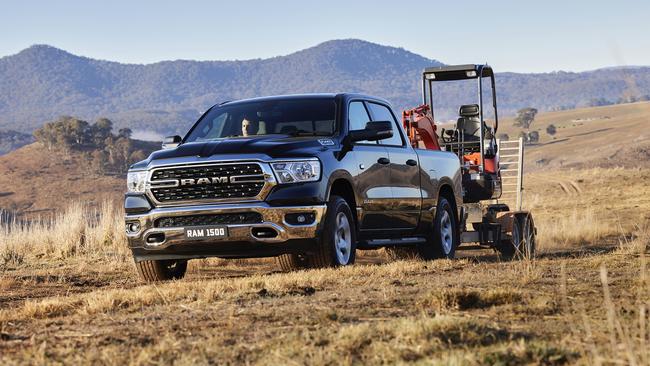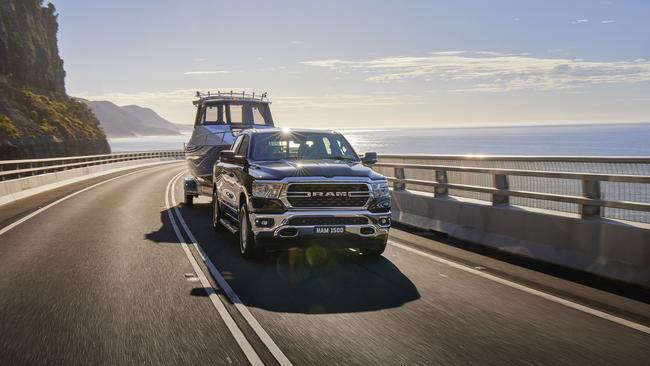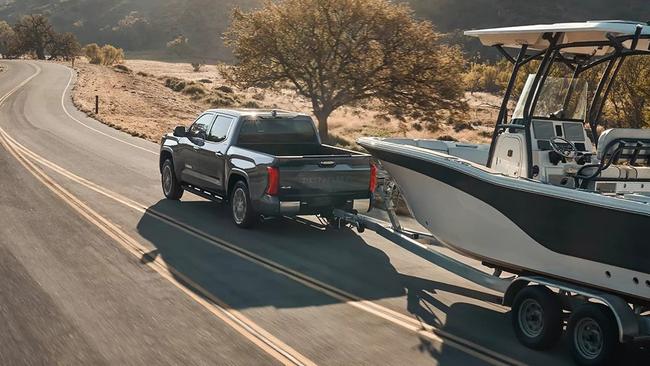New push to save Aussies from giant utes
Overseas research shows that big pick-up trucks pose a risk to other road users and now local safety authorities are poised to act.
Motoring News
Don't miss out on the headlines from Motoring News. Followed categories will be added to My News.
Emergency features designed to stop oversized American pick-up trucks from killing other road users will be put to the test by local ANCAP safety experts.
The independent safety body will test auto emergency braking, pedestrian detection and lane keeping assistance features in full-sized pick-up trucks in a new push to make roads safer.
The vehicles have not been included in ANCAP testing to date, though that will change in 2025.

Speaking at NSW’s CrashLab testing facility, Michiel van Ratingen – secretary-general of the Euro NCAP – said a test program led by Australia’s ANCAP would steer away from occupant protection and focus on the risks posed to vulnerable road users by full-sized pick-up trucks.
“Look at where the problem is,” he said.
“For passenger cars, most of them kill people inside the vehicle, so you have to basically protect them inside the vehicle.

“For heavier vehicles, the problem is primarily outside the vehicle because they kill a lot of people, vulnerable road users and people in other cars.
“Therefore … the focus has to be on avoidance, not on protecting one or two persons that happen to be in the truck, right?
“They are not the prime victim here.”
An investigation by America’s Insurance Institute for Highway Safety examined more than 18,000 crashes involving pedestrians.
It found that cars with a bonnet height greater than 40 inches (101.6cm) “are about 45
per cent more likely to cause fatalities in pedestrian crashes than cars”.
Vehicles with bluff, upright front-end styling also caused poor outcomes for pedestrians compared with sleeker sedans or hatchbacks.
Bigger cars with blocky looks have contributed to an 80 per cent increase in US pedestrian deaths since 2009.
IHS President David Harkey said: “these results tell us our instincts are correct: More aggressive-looking vehicles can indeed do more harm”.
“It’s clear that the increasing size of the vehicles in the US fleet is costing pedestrians their lives,” he said.
ANCAP is unlikely to conduct full-scale crash assessment of the Toyota Tundra, Ford F-150, Chevrolet Silverado and RAM 1500 pick-ups, as it needs to acquire five examples of each car to run the full gamut of destructive tests.

The cars aren’t cheap. Ford’s F-150 starts at about $117,000 drive-away in Australia, roughly twice as much as a similarly equipped Ranger Ute.
Cars crash-tested by ANCAP are often donated by the manufacturer. In some cases, the safety body uses funding from motoring clubs and governments to purchase vehicles for testing.
Carla Hoorweg, chief executive of ANCAP, said there was more benefit in assessing the driver assistance systems of all full-sized utes than singling one model out for crash tests.
Ms Hoorweg said the aim was to ensure “that vehicle doesn’t crash into other things on the road”.

“The focus is much more in that space than ‘are the occupants going to be injured?’, because they’re probably not going to be injured,” she said.
“These things are very heavy, and they’re very high.”
Full-sized American pick-ups are growing in popularity. GMSV recently celebrated the 8000th Silverado converted to right-hand-drive at its Victorian facility, while RAM’s pick-up is more popular than conventional utes such as the VW Amarok and Nissan Navara.

Ford started customer deliveries of the F-150 this week, and Toyota will supply the first of 300 Tundra pick-ups to customers taking part in an evaluation process at the end of this year.
Originally published as New push to save Aussies from giant utes


